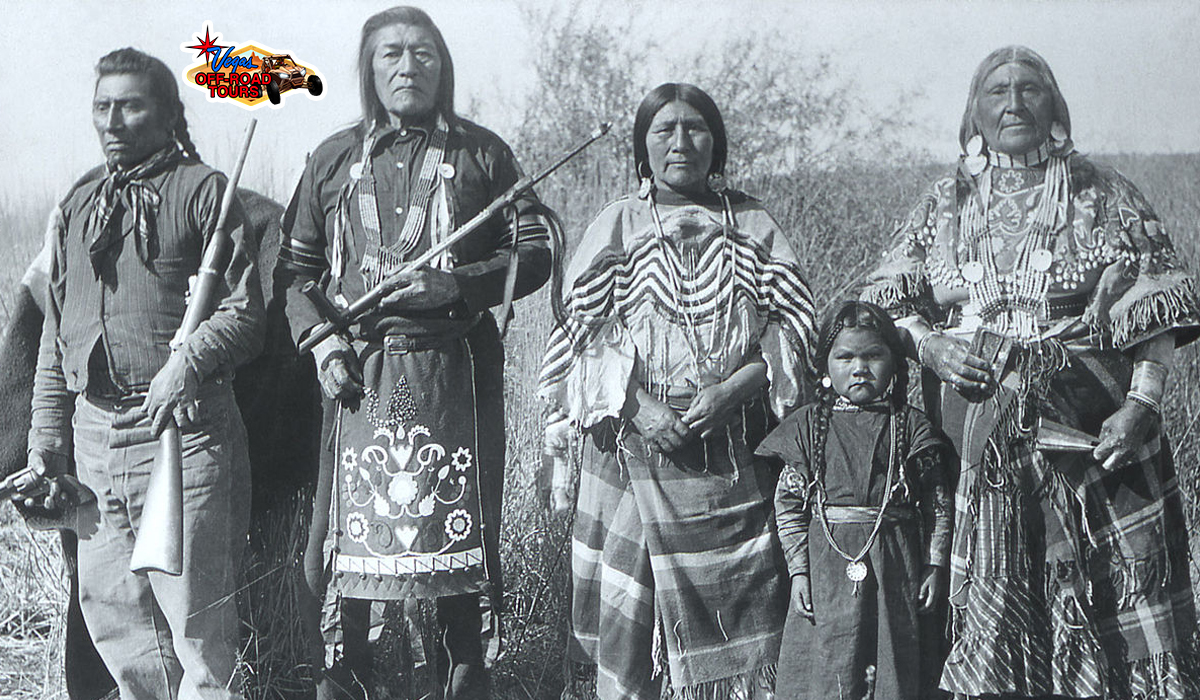10 Incredible Things You Didn’t Know About the Northern Shoshone Tribe
The Northern Shoshone Tribe has a story that stretches across thousands of years, deeply rooted in the mountains, deserts, and valleys of the American West. Their culture, resilience, and history are woven into the fabric of Nevada, Idaho, Utah, and Wyoming — a region also known for its rugged off-road beauty and desert trails. If you’re exploring these areas, check out OffRoad.Vegas for local adventure routes and desert experiences.. Today, this tribe continues to keep its traditions alive while embracing modern life. In this post, we’ll explore ten incredible things you might not know about the Northern Shoshone Tribe — from their language and legends to their survival skills and community spirit.
(Learn more about the tribe’s homeland and early history from the National Park Service and the Idaho Museum of Natural History.)
1. The Northern Shoshone Tribe’s Vast Homeland
Long before the borders of modern states were drawn, the Northern Shoshone Tribe lived across a wide region. Their ancestral lands stretched from southern Idaho into northern Nevada, western Wyoming, and parts of Utah. They were known as the “Snake People” by early European settlers due to their movement along the Snake River Basin.
Their homeland covered diverse environments — from high mountain valleys to arid deserts — and this influenced how they hunted, traveled, and built their shelters. Each landscape provided different resources that shaped their way of life.
2. Masters of Adaptation in Harsh Environments
Life in the Great Basin wasn’t easy. The Northern Shoshone Tribe mastered the art of survival in regions where food and water could be scarce. They were highly adaptable hunters and gatherers, relying on an intimate understanding of their surroundings.
They hunted small game like rabbits, gathered roots and seeds, and followed seasonal migrations of deer and elk. During the winter, they often settled near hot springs or river valleys to endure the cold months.
Their deep connection to nature taught them sustainable living long before the concept became a modern environmental ideal.
3. A Language Rich in Meaning and Music
The Shoshone language belongs to the Uto-Aztecan family, one of the largest Native American language groups. The Northern Shoshone Tribe’s dialect is musical and rhythmic, reflecting their oral traditions and storytelling culture.
Language is a powerful thread that binds their people together. Although the number of fluent speakers declined over time, revitalization efforts are ongoing. The Shoshone-Bannock Tribes Language and Culture Program works to preserve the language by teaching it to younger generations through classes, storytelling, and digital tools.
4. The Northern Shoshone Tribe’s Role in American History
The Northern Shoshone Tribe played a major role in the shaping of early Western U.S. history. They encountered explorers like Lewis and Clark, as well as fur traders, missionaries, and settlers moving west along the Oregon and California Trails.
These encounters brought both opportunities and conflict. Some Shoshone bands became important guides and allies, while others defended their territory as encroachment intensified. One tragic event, the 1863 Bear River Massacre in Idaho, marked one of the darkest moments in their history. Over 200 Shoshone men, women, and children were killed — a story that is now remembered through memorial sites and cultural preservation projects.
5. Deep Spiritual Connection with the Land
The spiritual beliefs of the Northern Shoshone Tribe are deeply connected to nature. Every mountain, river, and animal is believed to carry a spirit or purpose. Their ceremonies often celebrated seasonal changes, successful hunts, or healing.
They practiced traditional dances, such as the Sun Dance and the Round Dance, to honor their ancestors and connect with the spiritual world. These practices have endured generations and continue to be performed today in tribal gatherings and powwows.
6. Ingenious Shelter and Clothing Designs
The tribe’s creativity extended to how they built their homes and made their clothing. The Northern Shoshone Tribe often lived in movable shelters made of willow branches and covered with brush or hides. These structures, known as wickiups, were perfect for a nomadic lifestyle.
Their clothing was crafted from deer or rabbit hides, decorated with beads, porcupine quills, and natural dyes. Each design told a story — representing family, achievement, or spiritual belief.
7. The Role of Women in Shoshone Society
Women in the Northern Shoshone Tribe held powerful roles within their community. They were the primary gatherers, healers, and caretakers of oral traditions. Women were responsible for teaching children the stories, songs, and values that defined their culture.
They also crafted intricate baskets and clothing, preserving techniques that continue to inspire Native artists today. Many modern Shoshone women are educators, leaders, and advocates for tribal sovereignty and cultural preservation.
8. Modern-Day Life and Resilience
Today, the descendants of the Northern Shoshone Tribe live across several federally recognized tribal nations, including the Shoshone-Bannock Tribes of Idaho and the Duck Valley Shoshone-Paiute Tribe of Nevada.
Modern life blends tradition and progress. Tribal members pursue education, business, and art, while continuing to honor their roots through language, dance, and ceremonies. The Shoshone-Bannock Festival, for instance, is one of the largest Native celebrations in the Northwest — featuring powwows, horse races, and cultural exhibitions.
(To learn more, visit the Shoshone-Bannock Tribes official website.)
9. Food Traditions and Survival Skills
Food was central to the Northern Shoshone Tribe’s culture. Their diet reflected both necessity and creativity. They hunted bison, antelope, and fish, and gathered pine nuts, berries, and wild roots.
Cooking techniques were simple but effective — roasting, drying, and grinding ingredients into flour for travel. These traditions have influenced Native cuisine today, emphasizing natural, locally sourced foods that nourish both body and spirit.
Traditional food sources included:
Wild game such as deer and rabbit
Seeds, roots, and nuts
Freshwater fish from rivers and lakes
Seasonal berries and wild onions
10. Preserving Culture for Future Generations
The survival of the Northern Shoshone Tribe’s culture is a testament to resilience. Elders continue to pass down traditions through song, language, and storytelling. Many schools on reservations now integrate tribal history and language into their curriculum.
Cultural centers and museums — such as the American West Heritage Center — partner with tribes to share authentic stories and preserve artifacts that tell their story.
Younger members are using art, music, and social media to celebrate their identity in new ways while honoring their ancestors’ legacy.
Conclusion: A Legacy That Lives On
The story of the Northern Shoshone Tribe is one of endurance, culture, and connection to the land. From ancient survival skills to modern revival efforts, their history remains a living part of the American West. Learning about the Northern Shoshone helps us understand not only their past but also their ongoing contribution to our shared future.
Their journey continues — through every story told, every song sung, and every tradition kept alive.


